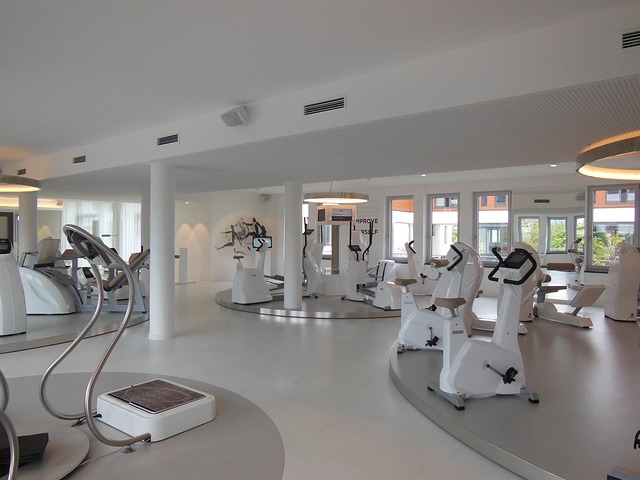When athletes talk about training efficiency, they often focus on how many hours they spend in the gym. However, the real secret lies in a well‑structured routine that combines consistent movement with strategic nutrition and recovery practices. By treating every meal as an opportunity to fuel the body, and by weaving active habits into daily life, you can maximize the gains you achieve in each training session.
Foundations of a Performance‑Driven Diet
A balanced diet is the cornerstone of training efficiency. It ensures your body has the raw materials it needs for muscle repair, energy production, and overall health.
- Carbohydrates as the primary energy source for high‑intensity workouts.
- Protein to support muscle protein synthesis and recovery.
- Healthy fats for hormonal balance and sustained energy.
Macronutrient Timing
When you consume macronutrients relative to your training can influence how effectively your body uses them.
“Eating a carb‑rich snack 30–60 minutes before a session boosts glycogen stores, while a protein‑rich meal post‑workout accelerates muscle repair.”
For most athletes, a small meal or snack with a 3:1 ratio of carbs to protein about an hour before training and a balanced recovery meal within 30 minutes after finishing can create a noticeable improvement in training efficiency.
Micro‑Nutrients: The Unsung Heroes
While macronutrients get most of the attention, micronutrients such as iron, calcium, and vitamin D are equally crucial for performance.
Iron deficiency, for instance, can lead to fatigue and reduced endurance, directly undermining the benefits of any training program. Ensuring you consume iron‑rich foods like lean meats, beans, and fortified cereals, along with vitamin C‑rich fruits to aid absorption, helps maintain energy levels throughout the week.
Hydration Strategies
Water is often underestimated as a performance enhancer. Even a 2% loss in body weight from dehydration can cause a measurable drop in power output.
- Drink 500 mL of water 2–3 hours before training.
- Incorporate electrolytes in longer sessions (>90 minutes).
- Replace lost fluids with a mixture of water and a small amount of carbohydrate when training intensity is high.
Active Lifestyle Beyond the Gym
Physical activity is not limited to structured workouts. Daily movement habits contribute significantly to overall training efficiency.
Walking or biking to work, taking the stairs, and stretching throughout the day all help maintain muscle flexibility and circulation. These small, consistent actions reduce injury risk and improve recovery, allowing you to train harder when it matters most.
Sleep: The Recovery Powerhouse
Most people underestimate the role of sleep in athletic performance. During deep sleep stages, growth hormone secretion peaks, and cellular repair processes accelerate.
“Aiming for 7–9 hours of quality sleep per night can be as effective as adding an extra workout day for improving performance metrics.”
Adopting a bedtime routine that reduces screen exposure, maintains a cool room temperature, and incorporates relaxation techniques can help you achieve the restorative sleep you need.
Mindful Training: Focus, Recovery, and Consistency
Consistency is the bridge between training plans and real gains. By setting realistic goals, tracking progress, and listening to your body’s signals, you create a sustainable framework for training efficiency.
Mindfulness practices—such as controlled breathing during sets, or brief meditation before workouts—can improve mental focus, allowing you to execute techniques with greater precision and less fatigue.
Supplementation: When to Use It
While a whole‑food diet should cover most nutritional needs, certain supplements can provide targeted support.
- Creatine monohydrate for strength and power output.
- Omega‑3 fatty acids to reduce exercise‑induced inflammation.
- Vitamin D and calcium for bone health, especially in low‑sun environments.
It is essential to consult with a healthcare professional before incorporating any new supplement to ensure it aligns with your individual health status and training demands.
Putting It All Together: A Practical Weekly Plan
Below is an example of how a balanced diet, hydration, active habits, and recovery can mesh with a typical training week. Feel free to adapt the timing and portion sizes to match your personal goals and preferences.
-
Monday (Strength Day):
- Pre‑workout: oatmeal with berries and a scoop of whey protein.
- Post‑workout: grilled chicken, sweet potato, and steamed broccoli.
- Hydration: 750 mL of water pre‑session, 500 mL post‑session.
- Recovery: foam rolling, 8 hours of sleep.
-
Tuesday (Cardio & Mobility):
- Pre‑run: banana with a handful of almonds.
- Post‑run: quinoa salad with mixed greens, cherry tomatoes, and a vinaigrette.
- Active: daily walks for 15 minutes each break.
- Recovery: stretching routine, 7.5 hours of sleep.
-
Wednesday (Recovery Day):
- Meal focus: protein‑rich smoothie with spinach, protein powder, and a tablespoon of flaxseed.
- Hydration: sip water throughout the day, aim for 2 liters.
- Activity: gentle yoga or a light swim for 30 minutes.
- Recovery: 9 hours of sleep, meditation for 10 minutes.
-
Thursday (HIIT):
- Pre‑session: complex carbs such as a whole‑grain bagel.
- Post‑session: salmon with brown rice and asparagus.
- Hydration: electrolyte‑infused water during the workout.
- Recovery: 8 hours of sleep, active cool‑down with light walking.
-
Friday (Strength & Power):
- Pre‑workout: Greek yogurt with honey and walnuts.
- Post‑workout: beef stir‑fry with bell peppers and quinoa.
- Hydration: 750 mL pre‑session, 500 mL post‑session.
- Recovery: foam roller, stretching, 8.5 hours of sleep.
-
Saturday (Long Endurance):
- Pre‑activity: oatmeal with cinnamon and a tablespoon of peanut butter.
- During: 300 mL water and a sports gel at the 60‑minute mark.
- Post‑activity: turkey sandwich on whole‑grain bread with avocado.
- Recovery: gentle stretching, 9 hours of sleep.
-
Sunday (Rest):
- Meal: balanced plate of mixed vegetables, tofu, and a side of brown rice.
- Hydration: water, herbal tea, and a glass of coconut water.
- Activity: leisurely walk or stretching session.
- Recovery: long nap if needed, 8 hours of sleep.
Monitoring Progress and Adjusting Strategy
Keeping a training log that records workouts, meals, hydration, and subjective fatigue levels helps identify patterns that may impact training efficiency. If you notice declining performance or persistent soreness, it may be a sign that your nutrition or recovery plan requires tweaks.
Use simple metrics such as weekly mileage, lifting maxes, or time to complete a set distance to quantify progress. Adjust macro ratios or hydration amounts based on these data points to refine your strategy continually.
Final Thoughts
Maximizing training efficiency is not about spending more hours on the treadmill or lifting heavier weights. It’s a holistic approach that balances nutrition, active living, sleep, and mental focus. By treating every component of your routine as a critical piece of the puzzle, you’ll unlock performance gains that are sustainable, injury‑free, and aligned with your long‑term health goals.




